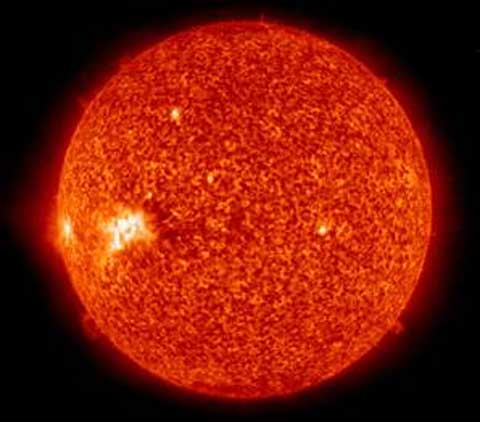updated 4:26 p.m. CT, Fri., Jan. 4, 2008
 |
An image sent back to Earth on Friday by the Solar and Heliospheric Observatory shows the sun's disk in ultraviolet wavelengths. The newly observed reversed-polarity sunspot is toward the upper left. |
The National Oceanic and Atmospheric Administration said Friday that the first sunspot of a new 11-year cycle has appeared in the sun’s northern hemisphere.
The frequency of sunspots rises and falls during these cycles, and the start of a new cycle indicates they are likely to begin increasing.
The height of solar activity is expected to come in 2011 or 2012.
Sunspots have been linked with intense magnetic activity on the sun. During such periods of high activity, solar storms can send outbursts of charged particles toward Earth.
The outbursts can affect Earth by disrupting electrical grids, airline and military communications, GPS signals and even cell phones, the agency said.
“Our growing dependence on highly sophisticated, space-based technologies means we are far more vulnerable to space weather today than in the past,” said NOAA Administrator Conrad C. Lautenbacher, Jr.
The most famous solar-caused outage came in 1989, when a coronal mass ejection knocked out power to a wide area of Quebec for nine hours. In 1998, during the buildup to the most recent solar maximum, magnetic activity was linked to the failure of the Galaxy 4 satellite, which led to widespread communications outages.
Last April an international panel of solar experts forecast that Solar Cycle 24 would start in March 2008, plus or minus six months. The panel was split between those predicting a strong or weak cycle.
This report includes information from The Associated Press and msnbc.com.